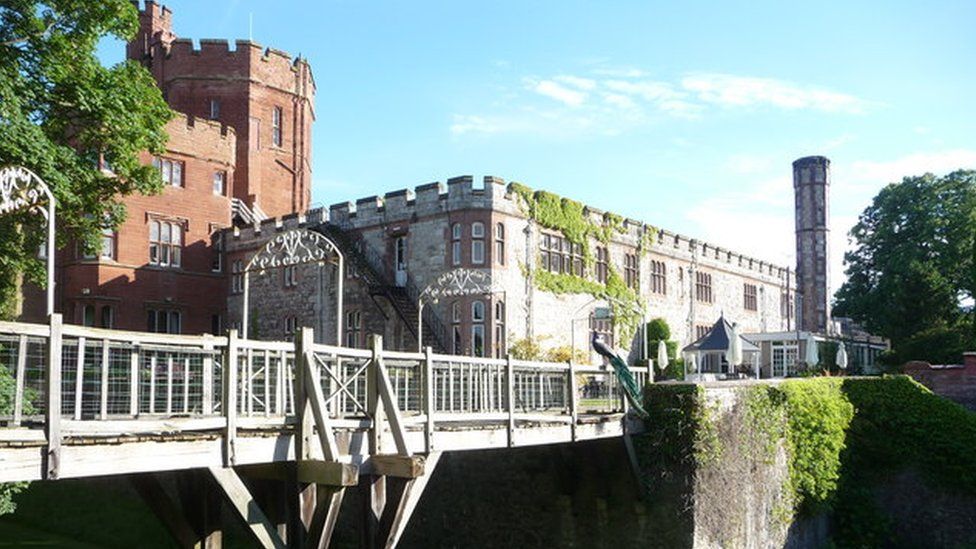'Fragile' Ruthin Castle stabilisation works to begin
- Published

Emergency work has begun to stabilise the historical Ruthin Castle.
Environmental body Cadw wants to stop further collapse of walls and tunnels at the "fragile" Denbighshire castle, which was started in 1277 by Edward I.
Cadw hopes to restore the 750-year-old ruins "before large parts of this significant historic site are lost".
"The medieval masonry is amazing but has been in a very poor condition for decades," said county archaeologist Fiona Gale.
"Two years ago there was a small collapse. Cadw are putting funding in to kick start this fantastic project and to address the worst areas of damage."
Cadw said Ruthin is "arguably the most-significant medieval castle in Wales not to have been conserved".
The work, which will be a "holding measure", will be undertaken by specialist rope access contractors who have cleared a huge amount of heavy vegetation from the walls to shore up the "crumbling walls to stabilise as much masonry as possible".
The Ruthin Castle Conservation Trust, which was created last year, wants to take over the lease of the ancient monument.
It hopes to encourage the local community to support "the restoration and sustainable conservation".
"Although emergency works at our ancient monuments are rare and are used as a last resort, Cadw's work at the site will prevent further loss of the site and will hopefully attract further funding for the Trust," said Economy Secretary Ken Skates.
Ruthin Castle was famously attacked in 1400 as the opening flashpoint of the Glyndwr wars, which were provoked by a regional dispute between Glyndwr and the 3rd Earl de Grey.
In the 19th Century, a gothic mansion was built on the site before becoming a private hospital. It was converted into a hotel in the mid 20th Century.
- Published31 October 2016
- Published1 July 2014
- Published21 May 2016